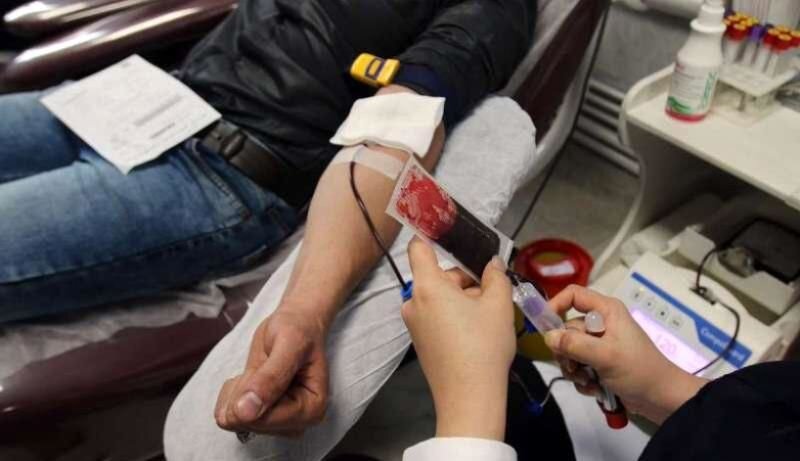Over 1m Iranians donate blood in 6 months

TEHRAN – A total of 1,051,029 individuals donated blood in Iran during the first six months of the current Iranian calendar year (March 21-September 22), Bashir Haji, the Blood Transfusion Organization spokesman said on Tuesday.
There are currently 178 blood donation centers in the country, with Fars, Khorasan Razavi, Khuzestan, Tehran, and Mazandaran provinces having the largest number of blood donation centers, he stated, adding, Fars province has 14 blood donation centers in the country.
Women donated 43,464 units of blood in the past six months, while the women's blood donation index is 4.2 percent, he noted.
He went on to say that the provinces of Lorestan, Markazi, Kordestan, Sistan-Baluchestan have the highest rate of women blood donors in the country.
The rate of continuous blood donation (with at least two blood donations per year) in the country is nearly 60 percent. On the other words, 60 percent of blood donors regularly refer to such centers, he explained.
Currently, Semnan, South Khorasan, and Bushehr provinces have the highest number of regular blood donors, he added.
Over the first six months of this year, the highest number of blood units has been collected from provinces of Tehran, Fars, and Khorasan Razavi, which constitute 30 percent of the whole blood donated in the country, Haji highlighted.
Blood donation rates in Chaharmahal-Bakhtiari, Qazvin, and North Khorasan provinces in the aforementioned period were significantly higher than in the same period a year earlier, he stated.
Also, in three provinces of Chaharmahal-Bakhtiari, Alborz and Markazi, women were more likely to donate blood than in the same period last year, he added.
90% of blood types are positive
Elsewhere in his remarks, Haji said that 90 percent of blood donors in the country have a positive blood type and only 10 percent of whom have negative blood types.
Most blood donors in Iran have O-positive blood type accounting for 34 percent, however, AB negative blood type with 1 percent blood donor is the rarest blood group in the country, he stated.
According to the World Health Organization, blood transfusion saves million lives and improves health but many patients requiring transfusion do not have timely access to safe blood, while about 117.4 million blood donations are collected wirldwide.
During the aforementioned period, 1.8 million of blood units and products, including, red blood cells, platelets and blood plasma, were distributed to medical centers and hospitals across the country, which increased by 3 percent compared to the same period last year, he concluded.
Blood donation saves millions of live
According to the World Health Organization, blood transfusion saves million lives and improves health, but many patients requiring transfusion do not have timely access to safe blood. Providing safe and adequate blood should be an integral part of every country’s national health care policy and infrastructure.
About 117.4 million blood donations are collected worldwide. 42 percent of these are collected in high-income countries, home to 16 percent of the world’s population.
About 12,700 blood centers in 170 countries report collecting a total of 100 million donations. Collections at blood centers vary according to income group. The median annual donations per blood center is 1,300 in the low-income countries, 4,100 in lower-middle-income countries and 8 500 in upper-middle-income countries, as compared to 23,000 in the high-income countries.
Data about the gender profile of blood donors show that globally 32 percent of blood donations are given by women, although this ranges widely. In 14 of the 119 reporting countries, less than 10 percent of donations are given by female donors.
Moreover, 62 countries collect 100 percent of their blood supply from voluntary, unpaid blood donors. Some 108 million blood donations are collected globally, half of these are in high-income countries. Meanwhile, blood donation by 1 percent of the population can meet a nation’s most basic requirements for blood.
FB/MG
Leave a Comment